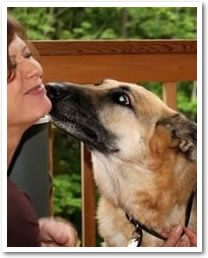
A lot of dogs I deal with, at least those that fall under general problems, often have excitement and hyper-activities associated with their contextual responses to stimulus. As most of you know I have three categories that I use to classify my behavioural cases, Aggression, Fear & Anxiety and General Problems.
The hyper-activities are mostly present in the general handling cases, but at times can overlap into aggression or fear issues. The purpose of my article is to understand the value of teaching your dog to be calm.
Starting Out
Teaching your dog to be calm ideally starts when they are puppies. When you get your puppy home, all you need to be working on is:
- bonding & imprinting
- name recognition
- bite inhibition
- house training
- S-O-C-I-A-L-I-Z-A-T-I-O-N!
I am not a big fan of starting ‘obedience’ training too early, as my primary concern is creating predictability for the puppy, not pressure. Predictability is created through consistent and controlled interactions that have a clearly defined outcome. The puppy relies on the predictability of the exercise to create calm. This is then marked (with a treat) and the whole process is repeated: the marking is required to create a positive connection between the exercise and state of mind, this allows us to repeat it and learning occurs.
Conversely, if I create a negative connection between the exercise and the state of mind, frustration soon follows and no learning takes place. The dogs frustration is soon replaced by anxiety with other behaviours often showing up to solve the anxiety problem. This results in more frustration for the owner, which in turn creates even more anxiety for the puppy. Often, we resort to nonsense like saying NO repeatedly, jerking on the leash, squirting it with water, rolling it over playing ‘mother wolf’ – all of which does nothing except, you guessed it, create more anxiety.
Some simple exercises that create predictability:
- Sit/Stay
- Practice using soft tones when talking to dog/ giving commands
- Fetch
- Hand feeding
- Hide/Seek Search exercise – hide treats in your hand, pocket etc. (use your imagination)
These exercises can be done with older dogs to. If you have an dog with some maladaptive behaviours, a simple exercise of SIT/STAY with treat marking can make huge adjustments in the dogs outcome prediction, in turn providing calm.
Importantly, these exercises also create deference, that vague yet essential ingredient necessary for all dogs/human relationships. We will go into more depth about deference in a later article.
Finally
You can have the dog you want just by using the right information, following protocols and DOING THE WORK! Too many times I see owners who are unwilling to put the time into getting what they want from their dog.
Pro-tip: When teaching, you DO NOT get to decide how long it should take for the dog to learn the skill: only the dog gets to make that decision.
As your dog gets older, it is important to provide daily mental challenges to keep his skills (and yours) sharp. Like all basic skills, they need to be practised over and over.
Remember, you create calm in your dog by providing predictability. Think about his routine and yours, is it calm and predictable, or is it chaotic and unpredictable? Use set times for walks, feedings, play and rest. Above all spend quality time with them, having a dog is a very intimate experience and they rely on you to set the parameters of the relationship – if you don’t they will.



